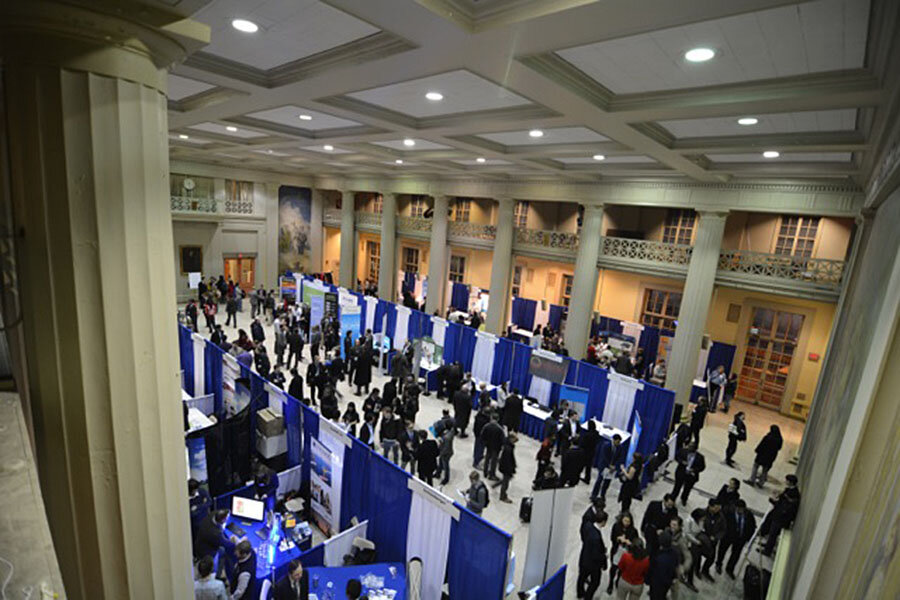Three big ideas from the MIT Energy Conference
Loading...
| Cambridge, Mass.
The Monitor's energy team crossed over a snowy Charles River to check out the MIT Energy Conference this past weekend. We met smart people, heard great talks, and got inspired. Here's their report, filed to subscribers of Recharge, the Monitor's weekly energy e-mail digest.
Three big ideas
-
The energy revolution will be digitized
Energy is fundamentally physical, but the industry around it is rapidly dematerializing. Smart meters, networked appliances, and cloud-based analytics are turning the power grid into a "cyber-physical system," as Thomas Siebel, CEO of C3 Energy, put it. 4D seismic surveys and robotic drilling make oil exploration as much about information-technology as it is about mechanics or geology. The energy challenge is increasingly one of data security, management, and analysis. Dirk Smit, a chief scientist at Shell, said there are countries where the company quadrupled local computing power just to make sense of all the information it collects. He envisions a "Google Earth for subsurface data" to virtually explore the world beneath our feet. A prevailing theme at MITEC went something like this: We've got sensors. We need more of them. And we need them everywhere. -
Innovation is incremental but ubiquitous
Everyone is looking for the next big thing in energy – a silver-bullet that will bring power to the billion humans without it and also curtail ballooning carbon emissions. The unglamorous truth is that energy progress comes in fits and starts. Eventually, it adds up to landmark advances. For example, the dramatic drop in solar costs is largely due to gradual improvements in the photovoltaic technology itself. But equally important, as SunEdison CEO Ahmad Chatila noted, are incremental improvements all across the supply chain – how panels are financed, installed, rotated, and maintained. That's not to say there won't be breakthroughs. But odds are the heavy lifting will come from small, obscure tweaks that make technologies radically better over time. -
Tomorrow's energy map looks nothing like today's
"We think developing countries are interesting because they house most of humanity," said Rob Stoner, co-director of MIT's Tata Center for Technology and Design. Much is said of global energy demand growth shifting from North America and Europe to rapidly developing nations in Asia, Africa, and South America. But supply is shifting along similar lines, too. Eighty percent of new nuclear construction is in non-OECD nations, according to Alan Hanson, the director of MIT's International Nuclear Leadership Education Program. Energy industries in Mexico, India, and elsewhere are opening up to outside producers, and low oil prices could accelerate the trend. "Resource nationalism recedes when prices go down," noted Francisco Monaldi, visiting professor at Harvard's Belfer Center.
Quotables
"One thing that we are probably in agreement with Greenpeace is that at the end of the day, probably most of our energy will come from the sun. That may take a few decades – it actually may take much more ... So it's almost an empty statement. I think the real question becomes 'Well, how do you manage that? How do you do that in-between [work]?'"
– Dirk Smit, Shell
"There are no 'disruptive' technologies. We must see these technologies as 'enabling' – not 'disruptive'."
– William A. Von Hoene, Jr., Exelon, on building a utility of the future
#Overheard
Recharge is a weekly email digest of energy news and analysis written by Monitor reporters David J. Unger and Jared Gilmour.






